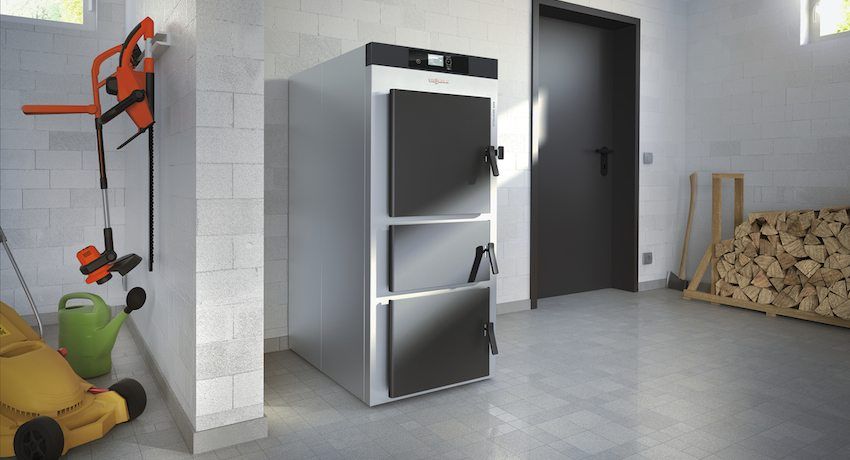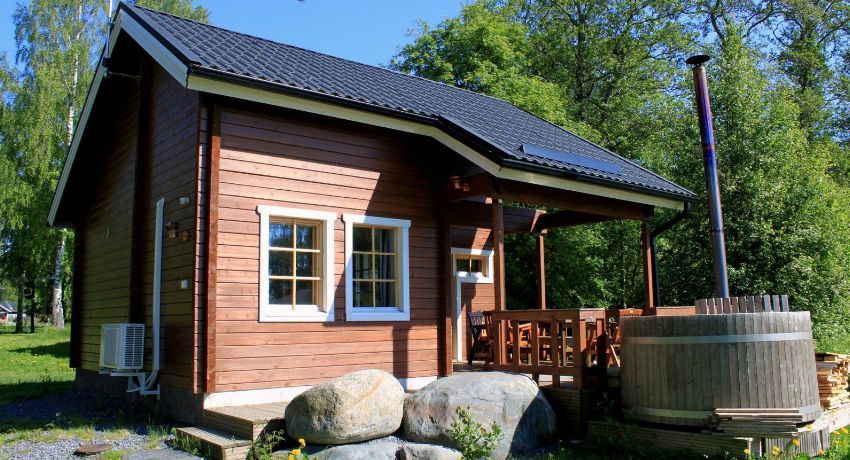How decorative plaster is made and applied on the walls with your own hands, the video of this process is not uncommon, not everyone knows, although this knowledge is useful and necessary for repair. In this regard, it seems necessary to talk about this technology in more detail for those who know what decorative plaster mixtures are and are going to revet the walls.
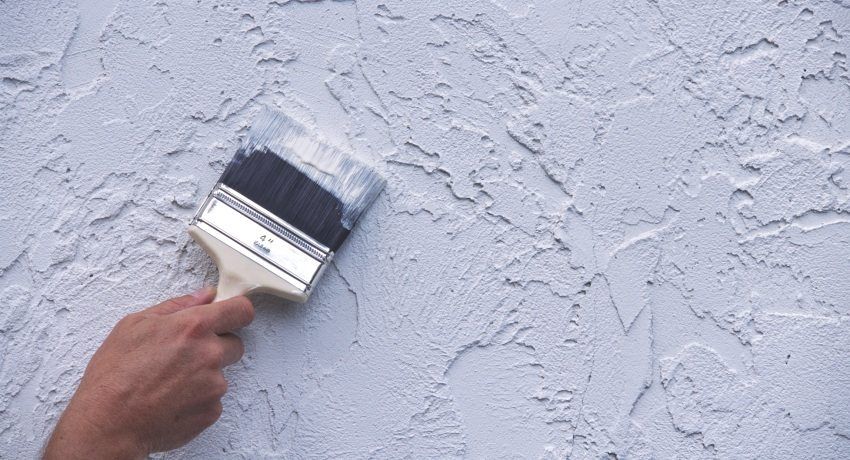
How to prepare a decorative plaster with his own hands, video and description of the process
Everyone wants to decorate the walls of his house with textured plaster, which is so popular today. An obstacle is often its price. For this reason, people always try to find a way to make their own mixtures. It is noteworthy that today we managed to try out a few very successful recipes that can easily compete with the store ones. Moreover, there are recipes, both for house decoration, and for works outside buildings.
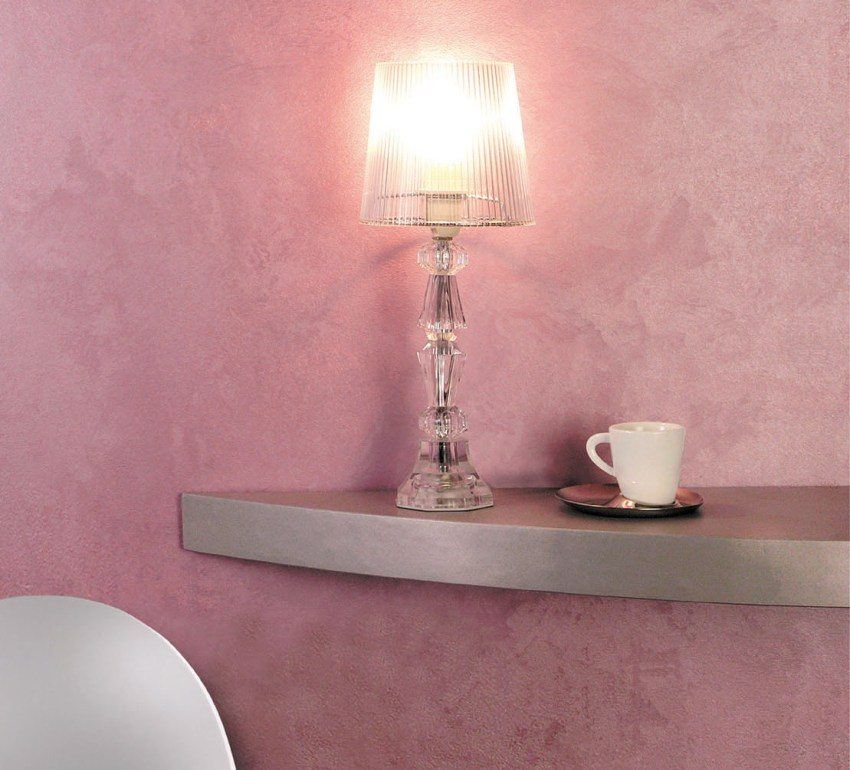
We will need perfectly ordinary components to prepare the composition for decorative plaster with your own hands. The videos offered online indicate a large number of ingredients, but we will limit ourselves to the following:
- Cement.
- Gypsum.
- Lime.
- Glass.
- Putty.
- Silicone.
- Acrylic.
- Clay.
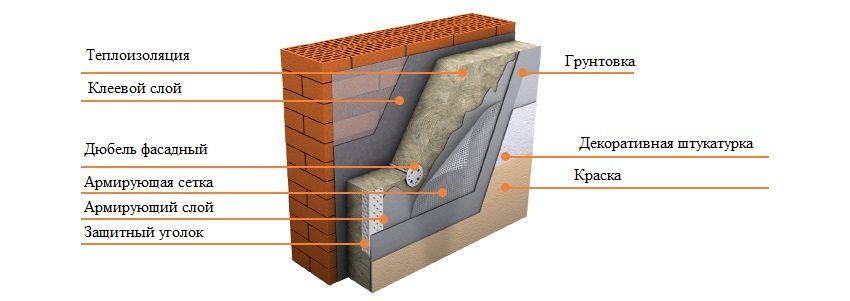
To add volume and different texture to mineral compounds, you need to add: sand, particles of various minerals, stone powder, shell rock and other solid elements. Synthetic fillers are added to the polymer compositions, giving the coating a pattern similar to leather or suede, or conveying an image of wood or silk. When adding stone chips to them, you can get a surface that looks like natural rock.
The viscosity and elasticity of the mixture give plasticizers, the most affordable of which is ordinary PVA glue, known and easily accessible to all. All the resulting plaster mixtures have a white or gray tint, so dyes and pigments are used to give them color, combined with one or another basis.
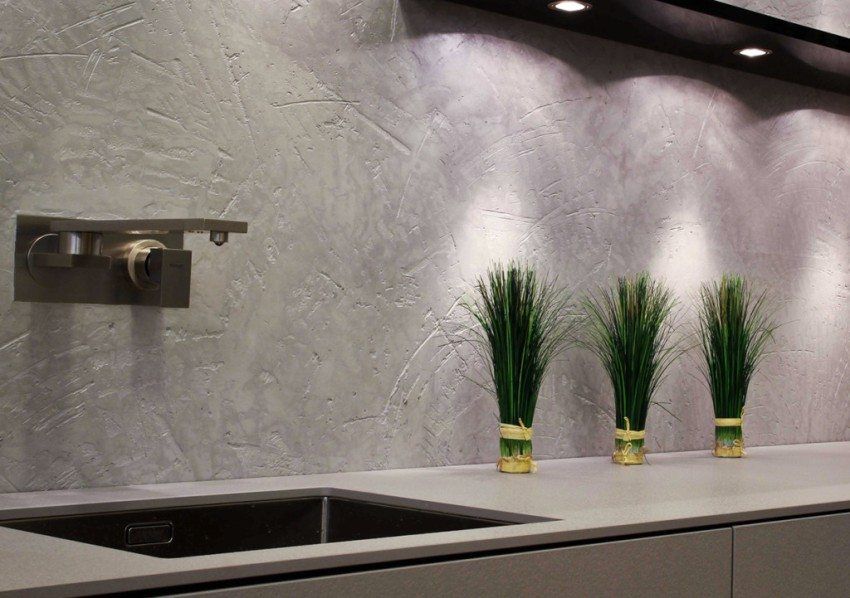
Helpful advice! It makes no sense to add dye to mineral plaster compositions. They can be simply painted on top of any paint. This will allow you to more accurately match the shade
All of these components are sold in stores of building materials or are in natural conditions, where they only need to take and properly cooked. All material must be well dried and sieved. Lime and clay need to be rubbed through a sieve in a viscous form before use. Particles should not exceed 3 mm in size.
Recipe 1. In order to make a simple decorative plaster with your own hands, the video is not needed. You just need to take the following ingredients in the indicated proportions and mix with a construction mixer or a drill that has a special nozzle for mixing solutions:
- PVA ordinary glue in the amount of 800 g
- The well-known solution of CMC 5% is carboxymethyl cellulose powder, which is used as a glue for wallpaper. It needs 2 kg. This component is diluted by the manual that is on the package.
- Laundry soap, which is crushed or rubbed, then make a 10% solution from it. It should be uniform, similar to thick glue.
- Powder chalk or gypsum in the amount of 6.5 kg.
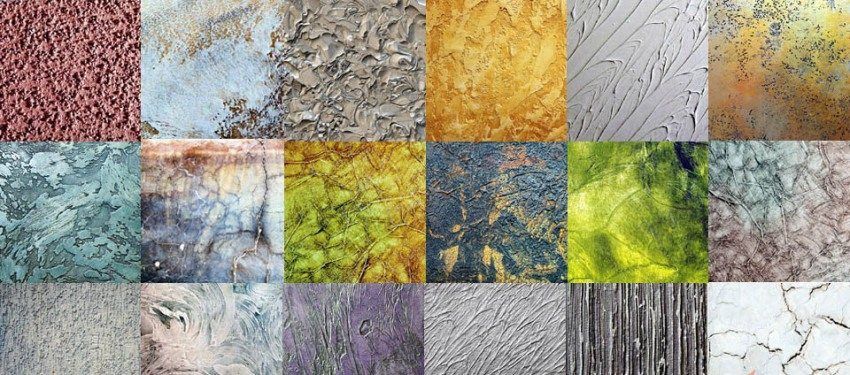
The resulting composition revets the walls with the use of techniques for applying decorative plaster, which will be described below. The big disadvantage of this recipe is that the mixture applied to the wall has a long drying period.
Recipe 2. Another simple recipe for decorative plaster for interior work based on the use of ordinary sand. They take 3 parts of river washed and sifted sand, 3 parts of gypsum with mineral additives (sathengips) and 1 part with polymer additives (fugenfüller), which will provide moisture resistance and strength of the resulting mixture. All components are mixed dry and only then dissolved with water and make the final batch.

Recipe 3. To simulate a textured coating, you can make a mixture of primer and satengips. The primer should be water based with a synthetic polymer that does not form a moisture barrier film. First, the primer is diluted with half the volume with water, and then dry satengips are added to it. Do this before the formation of a viscous pasty mass. It should stand for a while, after which it should be mixed again to remove air.
Recipe 4. If you want to decorate the walls in a damp room, you can make decorative plaster using tiled glue. Video of this process is often found on the network. Glue is prepared according to the recipe that is on its packaging. Then just put on the wall and draw any pattern. With the help of a wet brush texture can be smoothed.
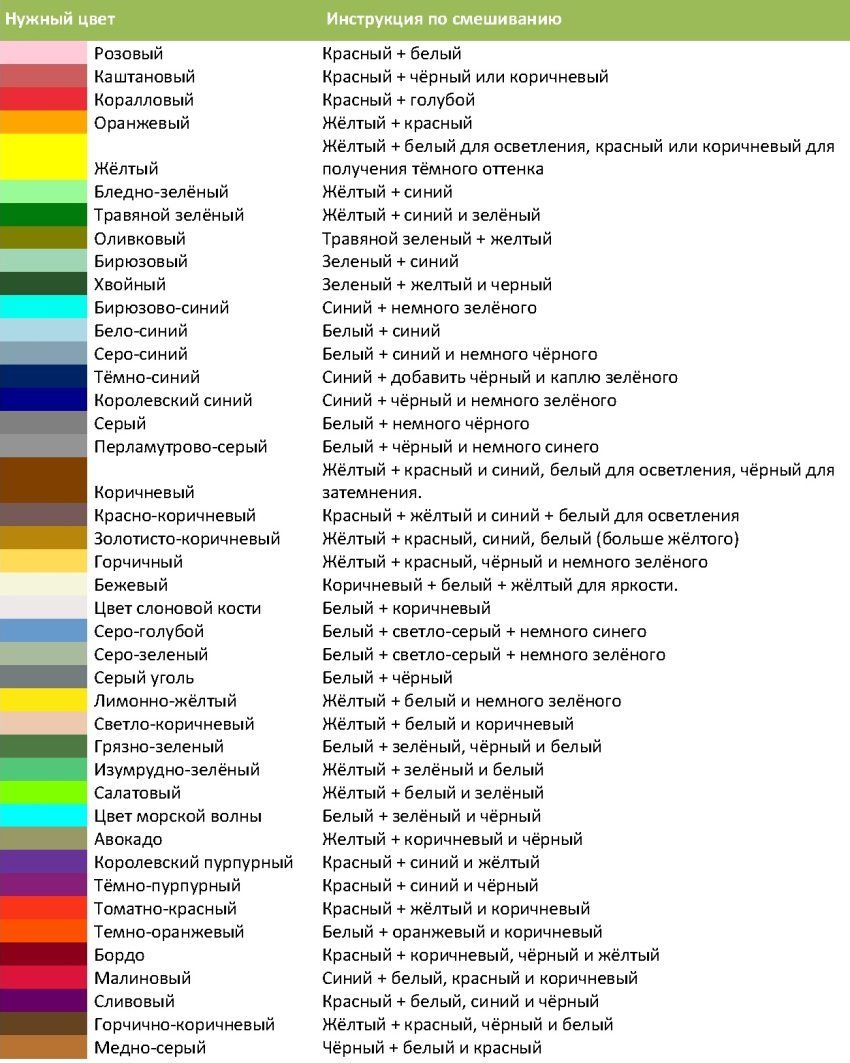
Helpful advice! Similar technology can be used to finish the facade. Only in this case, the glue is replaced by the usual cement-sand mortar.
Recipe 5. For facades, you can prepare a mixture based on the usual cement and river sand. Adding lime to it is allowed only in dry areas. From the fraction of sand depends on the depth of the texture of the coating obtained. To prepare such a solution, you will need 1 part of white Portland cement M400 and 3 parts of river sand. Stirring is performed, after which the mixture is diluted with water to a creamy consistency. The decorative effect of such a solution is achieved by the features of its application to the surface. It is simply sprayed with a spray or long-bristle brush by hand. It turns out a coating resembling the surface of a fur coat.
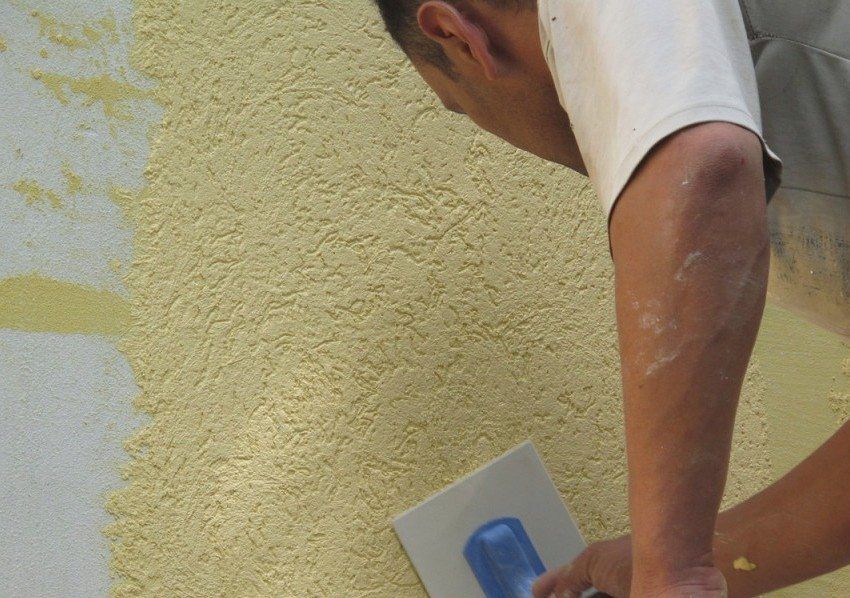
Of all the existing recipes, probably the most famous is the recipe for making decorative plaster with your own hands from ordinary putty. There is a lot of talk about him, so consider it in more detail.
This is a very budget option for self-preparation of decorative plaster mix. For her take the following components:
- Hard putty ordinary. At the same time, the texture of the future coverage depends on it. If you only need a relief that is made smears, then it is enough to take a thin putty. For the structure in the form of bark beetle, coarse plaster will be needed.
- PVA glue or deep primer will give the composition strength and elasticity. Take this plasticizer in an amount of from 2.5 to 6.5% of the volume of the mixture. The higher this percentage, the stronger the coating, although it will take longer to dry.

To prepare the composition, all derivatives are thoroughly stirred to the desired creamy consistency. It is necessary to thicken the composition by adding putty.
To learn how to apply decorative plaster on the walls prepared by yourself from ordinary plaster, read on.
Applying homemade plaster is made with a spatula with a layer of 3 mm. After the upper layer has set, a still blend is textured with the help of various improvised objects. Crumpled polyethylene or paper, a sponge is good for this. If you want to get a large picture, then use pre-cooked stamps. So do the texture under the brick. You can use rubber rollers, which are applied to the patterns. With the help of a small soft spatula, you can create embossed patterns with smear movements.

There is another way to apply decorative plaster with your own hands. The video of his application illustrates well how successful he is. The coating is made in several layers. The first layer is the background. It is without relief, just smooth. After drying, it is ground and coated with a primer, which improves adhesion to the next layer. It is already done on the stencil. This layer is convex and is a pattern having a volume. Most often used plant motifs, grape clusters or geometric shapes.

Helpful advice! Volumetric figures should not rise above the background layer by more than 5 mm. This precaution will not allow the layer to crumble ahead of time.
About self-made and applying decorative plaster with their own hands, the video is quite a lot. In them you can find many other techniques for obtaining a beautiful texture.
